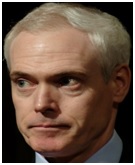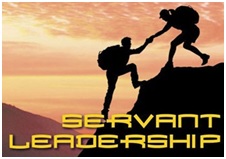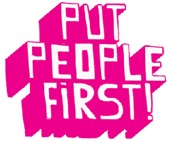|
 |
|
 |
Jim Collins, Good to Great (2001)
American management expert on business success (pictured right). Worked at Stanford Business School in California with Jerry Porras, pictured right below, with whom he wrote the best-seller, Built To Last.
See also... Jim Collins in the Management Gurus section.
Book summary
Why are only a few companies great?
“Good is the enemy of great”, says Collins. In other words, it is easy to settle for being good, so we don’t strive to be great.
How good companies become great
1. Level 5 leaders The best (level 5) leaders are egoless with
Level 1 Highly capable individual (getting results through “talent, knowledge, skills and good work habits”).
Level 2 Contributing team member (effectively contributing to group performance).
Level 3 Competent manager (effectively organizing people to achieve organizational objectives like customer satisfaction).
Level 4 Effective leader (inspiring people to achieve a vision and higher performance).
2. First who...then what “First get the right people on the bus (and the wrong people off the bus) before you figure out where to drive it”. In other words: Get the right people in the right jobs (working on your best opportunities, not the biggest problems) and then decide on strategy. The great companies are “rigorous” with challenging performance standards but avoiding ruthless redundancies, if possible.
3. Confront the brutal facts (yet never lose faith) Facing reality whilst having faith in success (the “Stockdale Paradox”). This requires:
4. The Hedgehog Concept Simplifying the world into one principle or concept that makes you a world beater. To do this you must do three things (three “intersecting circles”):
5. A culture of discipline Achieving innovation and customer satisfaction through disciplined:
.
6. Technology accelerators Applying certain technologies whilst realizing that technology can’t be the cause of greatness or decline “Technology can accelerate a transformation, but technology cannot cause a transformation”, says Collins. 7. The flywheel and the doom loop Greatness doesn’t happen overnight but through a slow but constant pursuit of success like pushing a great giant flywheel. The opposite of this Flywheel Effect is the Doom Loop, when failure results from change not happening.
8. From Good to Great to Built to Last Making greatness permanent through:
(as outlined in Collins and Jerry Porras’ book, Built to Last)
Key quote on human resource management People are not your most important asset. The right people are.
Key quote on business success That good is the enemy of great is not just a business problem. It is a human problem.
Key quote on leadership and management One of the most damaging trends in recent history is...to select dazzling celebrity leaders and to de-select potential Level 5 leaders.
Key quote on management The best people don’t need to be managed. Guided, taught, led – yes. But not tightly managed.
|
|
|
||
|
|
|
||
|
||
| Copyright © wisdomtowin.com All Rights Reserved | ||
|












